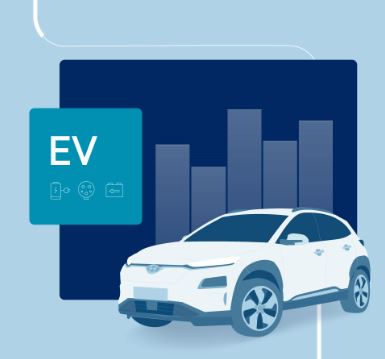Research and development efforts to create more effective and inexpensive solutions are expanding along with the electrification megatrend. The researchers at the Center for Automotive Energy. Improved heavy, low-cost, high Neodymium Iron Boron (Nd-Fe-B) magnets have been created at the International Advanced Research Centre for Powder Metallurgy & New Materials (ARCI), an independent Research and Development Center of the Department of Science and Technology (DST), Government of India. These magnets are in high demand for electric vehicles (EV) and may help make them more affordable.
In accordance with the Government of India’s Atmanirbhar Bharat mission, ARCI is establishing a pilot plant to produce near-net-shaped Nd-Fe-B magnets through a significant initiative financed by the Science and Engineering Research Board (SERB). For the magnets produced at the pilot plant, the aforementioned technique will be investigated.
The novel approach might potentially be utilized to commercially produce Nd-Fe-B magnets in India, decreasing the need for imports to provide the primary needs of the car industry.
Today’s EVs employ BLDC motors. Brushless DC (BLDC) motors made of rare earth Neodymium Iron Boron (Nd-Fe-B) magnets are used in more than 90% of electric vehicles.
Due to its outstanding mix of magnetic properties, the Nd-Fe-B magnet has been one of the most sought-after permanent magnetic materials for various applications since it was discovered by the Japanese scientist and entrepreneur Masato Sagawa in 1984.
Nd-Fe-B magnets used in electric vehicles (EVs) must have a high resistance to demagnetization since they run at high temperatures between 150 and 200 oC. Pure Nd-Fe-B magnets lack this ability. As a result, an alloy containing dysprosium (Dy) metal is added to increase demagnetization resistance. Researchers from all over the world are working to improve Nd-Fe-B magnets’ coercivity (resistance to demagnetization) without using expensive Dy.
The scientific community has chosen to enrich the space between the Nd-Fe-B magnet’s grains with “non-magnetic” materials using the appropriate heat treatments in order to increase coercivity (grain boundary diffusion).
The grain boundary diffusion process (GBDP) was used by the ARCI scientists to increase the coercivity of Nd-Fe-B melt-spun ribbons containing Niobium (Nb) by employing a low melting point alloy of Nd70Cu30 as the source for the “non-magnetic” element. They have noted that the precipitation of Nb limits grain development during grain boundary diffusion, allowing copper (Cu) to be enriched at the grain boundaries and enhancing the Nd-Fe-B powders’ resistance to demagnetization.
This study’s coercivity result of 1 T at 150 oC, which is necessary for automotive applications, was published in Materials Research Letter. It may be a good idea to use this result to build magnets devoid of Dy for EV applications.








